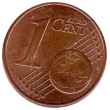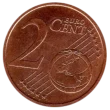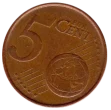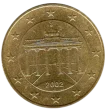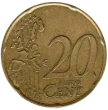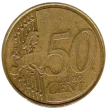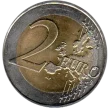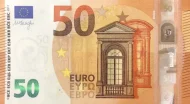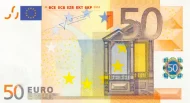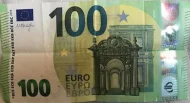Exchange your Euros
We exchange current and withdrawn Euro coins and banknotes.
If you have Euros leftover from trips abroad then you’ll probably know that you can’t change them at the bank. This means that unless you remember to dig them out and take on your next trip they’ll probably sit in a drawer somewhere never to be used again. But what if there was a fast, hassle free and easy way to exchange them into cash…? That would solve this problem for you, right?
€ - EUR
Although the Euro was first introduced in 1999, banknotes and coins in this currency did not enter general circulation until 2002. Since then, Euro coins have entered circulation in 22 countries in Europe.
Euro information
The Euro has eight denominations of coin, ranging from one cent to two Euros. The three smallest denominations — the one-, two- and five-cent coins — are made of steel with a copper coating. The next group of coins, which includes the 10-, 20- and 50-cent coins, are made from an alloy called “Nordic gold”, which consists primarily of copper with smaller amounts of aluminium, tin and zinc. The most valuable Euro coins, the one- and two-Euro coins, are bimetallic, with part of the coin being cupronickel while the other part is another alloy of copper, zinc and nickel.
All Euro coins have the same reverse side, regardless of the issuing country. This is based on a design by Luc Luycx, a Belgian artist, and displays a map of Europe, twelve stars and the value of the coin. There are two slightly different versions of this obverse design; a new version was introduced in 2007 to reflect new member states.
Although the reverses of these coins are identical, the obverses vary depending on the country issuing the coins. In some countries, the obverse is the same on all denominations. For instance, all Belgian coins show a profile bust of the King of the Belgians on the obverse, while all Irish coins show a harp, the national symbol which appeared on the obverse of the Irish pound coins.
Not only do the obverse designs of these coins vary from issuing country to issuing country, they can also vary from denomination to denomination within the same country’s coinage. For instance, the Greek one-cent coin shows a trireme, a warship from the Classical period, while the two-cent coin shows a three-masted sailing vessel from the Greek War of Independence in the early 19th century.
Within these variations, certain themes emerge. For example, the Greek one- and two-cent coins have different obverses, but both designs are of ships. The design of the five-cent coin also shows a ship, while the 10-, 20- and 50-cent coins all show figures from the history of the Greek struggle for independence and the one- and two-Euro coins show examples of Classical art. The three different types of coin thus have an overarching theme.
Although the obverse designs vary from country to country, there are some similarities. Almost all obverse designs display twelve stars, representing the twelve founding states of the EU, as well as the name or monogram of the issuing country.
To mark special occasions, countries will sometimes mint commemorative coins. These are sometimes worth two Euros. In other cases, they carry a value not otherwise struck, such as the German commemorative ten-Euro coin. Unlike other coins, these coins are not legal tender outside the country of origin. For the most part, however, they do not circulate even within their country, being kept by coin collectors.
You can find more information on Euro coins on the European Central Bank Website

